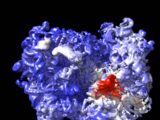
Structure-function relationship analysis
May 17, 2023Systems Biology and Network Analysis
Systems biology and network analysis are inter-disciplinary disciplines that seek to gain a global understanding of biological systems by analysing the interactions and relationships between their constituent parts. Let’s investigate each of these ideas:
Systems biology is an approach that combines experimental and computational methodologies to investigate the behaviour and function of complex biological systems as a whole. It concentrates on understanding how individual components, such as genes, proteins, and metabolites, interact and work together to generate emergent system properties. To capture and analyse large-scale biological data, systems biology incorporates techniques such as high-throughput omics technologies (genomics, transcriptomics, proteomics, metabolomics), computational modelling, and data analysis. The objective is to discover the mechanisms, dynamics, and regulatory networks that govern biological processes such as cellular signalling, metabolic pathways, and gene regulation. By investigating system-level properties, systems biology provides a holistic perspective that can aid in the prediction of system behaviour, the identification of key regulatory nodes, and the discovery of novel insights into biological phenomena.
Network analysis is a computational method used to examine the interconnections and relationships between biological system components. Interactions between genes, proteins, metabolites, and other biological entities are captured by networks that are represented as graphs. Network analysis permits researchers to quantify and analyse the topology, connectivity, and dynamics of these networks, thereby revealing the structure and function of biological systems. The following are important network analysis techniques:
a. Network Construction: Biological networks can be built using experimental data, computational predictions, or a combination of the two. Gene regulatory networks (GRNs) represent the regulatory relationships between genes, whereas protein-protein interaction networks (PPI networks) represent the physical interactions between proteins. Metabolic networks, signalling networks, and co-expression networks are additional categories of networks.
b. Network Visualisation: Network visualisation tools facilitate the identification of patterns, nodes, and modules within a network by visualising complex networks. Visualisations offer an intuitive representation of component relationships and interactions.
c. Network Metrics and Analysis Network metrics, such as degree centrality, betweenness centrality, and clustering coefficient, quantify various network properties and aid in identifying significant nodes and modules. Community detection algorithms, pathway enrichment analysis, and motif analysis are examples of network analysis techniques that provide insight into the functional organisation and dynamics of the network.
Mathematical and computational models can be created to simulate and forecast the behaviour of biological networks. These models facilitate the comprehension of network component dynamics, the identification of important regulatory interactions, and the prediction of the system’s response to perturbations.
Systems biology and network analysis provide a robust framework for investigating complex biological systems and discovering the underlying behavioural principles. These methods offer a systems-level perspective, enabling researchers to comprehend the interconnectedness of biological components, identify key regulatory elements, and gain insights into the emergent properties of biological systems. Systems biology and network analysis contribute to advancements in disciplines such as personalised medicine, drug discovery, and the comprehension of diseases and biological processes by integrating experimental data with computational models.
Integration of biological data and construction of biological networks
In systems biology and network analysis, the integration of biological data and the construction of biological networks are essential stages. These processes entail gathering and integrating diverse categories of biological data in order to construct extensive networks that capture the interactions and relationships between biological entities. Here is a summary of these steps:
Biological data can be gathered from a variety of sources and technologies, such as genomics, transcriptomics, proteomics, metabolomics, and other high-throughput experimental methods. These data sources generate vast quantities of information regarding genes, proteins, metabolites, and their respective activities. Gene expression levels, protein-protein interactions, metabolic pathway information, and regulatory interactions may be included in the data.
Integration of disparate biological data sets is essential for understanding the complexity of biological systems. Data integration is the process of combining and harmonising data from various sources to ensure compatibility and consistency. Data normalisation, quality control, and data transformation are examples of integration techniques used to facilitate the combination and analysis of data. Integration enables researchers to generate a unified data set that provides a more complete view of the studied biological system.
Following the collection and integration of data, the next stage is the construction of biological networks. The relationships and interactions between biological entities such as genes, proteins, and metabolites are represented by networks. Protein-protein interaction networks (PPI), gene regulatory networks (GRN), metabolic networks, and signalling networks are among the networks that can be constructed. Based on the integrated data, network construction involves designating the nodes (biological entities) and the edges (interactions).
After the biological network has been constructed, it can be subjected to a number of network analysis techniques. Network analysis reveals the network’s structure, dynamics, and functional properties. Researchers are able to calculate network metrics in order to quantify the connectivity, centrality, and clustering properties of nodes and edges. Moreover, network analysis can identify network modules, clusters, and motifs, which represent groups of interconnected components with distinct biological functions.
Visualisation is essential for interpreting and comprehending the complex relationships within a system’s constructed biological networks. Network visualisation tools enable researchers to visualise networks as graphical representations, offering an intuitive and interactive method for exploring and analysing network structure. Important nodes, clusters, or pathways within the network can be highlighted by visualisations, facilitating the identification of essential components and their roles in biological processes.
Through the integration of biological data and the construction of biological networks, researchers obtain a comprehensive understanding of the interactions and relationships within biological systems. These networks are invaluable for comprehending the complexity of biological processes, identifying key regulators, and predicting system behaviour. Integration and analysis of biological networks play a crucial role in systems biology, contributing to advances in disciplines such as drug discovery, personalised medicine, and the comprehension of diseases and biological pathways.
Analysis of biological pathways and regulatory networks
Understanding the complex interactions and regulatory mechanisms within living organisms is dependent on the analysis of biological pathways and regulatory networks. Here is a summary of these analysis methods:
Biological pathways are a series of interconnected biochemical reactions that regulate diverse cellular processes, as determined by pathway analysis. The study of the structure, dynamics, and functional responsibilities of these pathways constitutes pathway analysis. The following are key techniques in pathway analysis:
a. Pathway Enrichment Analysis: This method identifies biological pathways that are overrepresented in a given set of genes or proteins. Understanding which pathways are substantially affected by a given condition or experiment is beneficial.
b. Pathway Topology Analysis: This analysis analyses the topology of a pathway to identify crucial nodes (genes, proteins) that are essential to the pathway’s overall function.
c. Pathway Dynamics and Simulation: Computational modelling and simulation techniques are employed to investigate the dynamics of biological pathways, documenting their temporal behaviour and response to various stimuli and perturbations.
Regulatory Network Analysis consists of the interactions between genes, proteins, and other regulatory elements that regulate gene expression and cellular processes. Analysing regulatory networks facilitates the identification of regulatory relationships, transcriptional circuits, and control mechanisms involved in gene regulation. The following are key techniques in regulatory network analysis:
On the basis of gene expression data and DNA sequence analysis, computational methods are used to infer the regulatory relationships between transcription factors (TFs) and target genes.
Network motifs are recurrent patterns of interconnections within regulatory networks. The analysis of these motifs aids in the identification of functional modules and regulatory motifs that play crucial roles in cellular processes.
c. Network Perturbation Analysis: By perturbing a regulatory network via genetic manipulations or external stimuli, researchers are able to examine how the network responds and adapts to changes. Perturbation analysis reveals the key regulatory elements and their functions in preserving the stability and functionality of a network.
d. Network Visualisation and Graph Theory Analysis: Visualisation and analysis of the structure and connectivity of regulatory networks employ network visualisation techniques and graph theory. This serves to identify important regulatory hubs, modules, and motifs.
These analyses shed light on the intricate connections and dynamics of biological pathways and regulatory networks. They contribute to the discovery of the fundamental mechanisms of cellular processes such as development, signal transduction, and the progression of disease. By examining the interactions and regulations within biological networks, scientists can better comprehend the complex behaviour of living systems and make significant contributions to disciplines such as medicine, biotechnology, and synthetic biology.
Modeling and simulation of biological systems
Modelling and simulation of biological systems are potent computational techniques utilised to comprehend and predict the behaviour of intricate biological processes. Researchers can simulate the dynamics and interactions of biological systems by constructing mathematical or computational models that represent the underlying biological mechanisms. In the context of biological systems, the following describes modelling and simulation:
Mathematical and Computational Modelling: Mathematical models represent biological systems using a set of equations that characterise the relationships between the components of the system. Depending on the amount of detail and randomness considered, these models may be deterministic or stochastic. Utilising computer algorithms and simulations, computational models represent the dynamics and behaviour of biological systems. Frequently, these models incorporate experimental data and biological knowledge to generate more realistic representations.
Varieties of Models:
a. Deterministic Models: Deterministic models presume the behaviour of a biological system can be precisely predicted using a set of mathematical equations. These models characterise the rate of change of variables over time by employing differential or difference equations. Deterministic models are appropriate for representing systems whose dynamics are well-defined and predictable.
b. Stochastic Models: Stochastic models allow for uncertainty and randomness in biological systems. These models employ probabilistic techniques, such as Markov processes and Monte Carlo simulations, to represent the variability and stochastic events that occur within the system. When analysing systems with inherent noise or dealing with limited data, stochastic models are particularly useful.
Agent-based models simulate the behaviour of individual agents (e.g., cells, organisms) as well as their interactions within a larger system. These models take the heterogeneity and individual-level dynamics of biological entities into account, allowing for the investigation of emergent properties and complex phenomena in biological systems.
Once a model has been constructed, simulation techniques are utilised to simulate the behaviour of a biological system over time. Simulations require the solution of equations or the execution of computational algorithms to generate dynamic profiles of relevant variables. The data can then be analysed to obtain insights into system behaviour, identify key factors, predict outcomes, and test hypotheses.
Model Calibration and Validation Model calibration entails modifying the model’s parameters to match experimental data or known biological behaviour. Validation involves comparing the model’s predictions to independent experimental data or observations to determine its accuracy and dependability. To refine and enhance models, calibration and validation cycles must be repeated iteratively.
Modelling and simulation have numerous applications in biology and medicine, including the following:
a. Understanding Biological Processes: Models aid in elucidating the underlying mechanisms and dynamics of biological processes, such as gene regulation, cellular signalling, metabolic pathways, and disease progression.
Models can be used to simulate the behaviour of drug molecules, to predict their interactions with biological targets, and to optimise drug design and dosing strategies.
Models aid in comprehending the behaviour of complex biological networks, identifying key regulatory elements, and predicting network dynamics and responses to perturbations.
d. Personalised Medicine: Models can be personalised using patient-specific information to predict treatment outcomes, optimise therapies, and identify individualised disease management approaches.
Models aid in the design and engineering of novel biological systems, directing the construction of synthetic genetic circuits and metabolic pathways.
Modelling and simulation provide valuable insights into the difficult-to-observe behaviour and dynamics of biological systems. They enable researchers to make predictions, test hypotheses, and acquire a deeper understanding of the complexity of biological processes, complementing experimental methods.


















